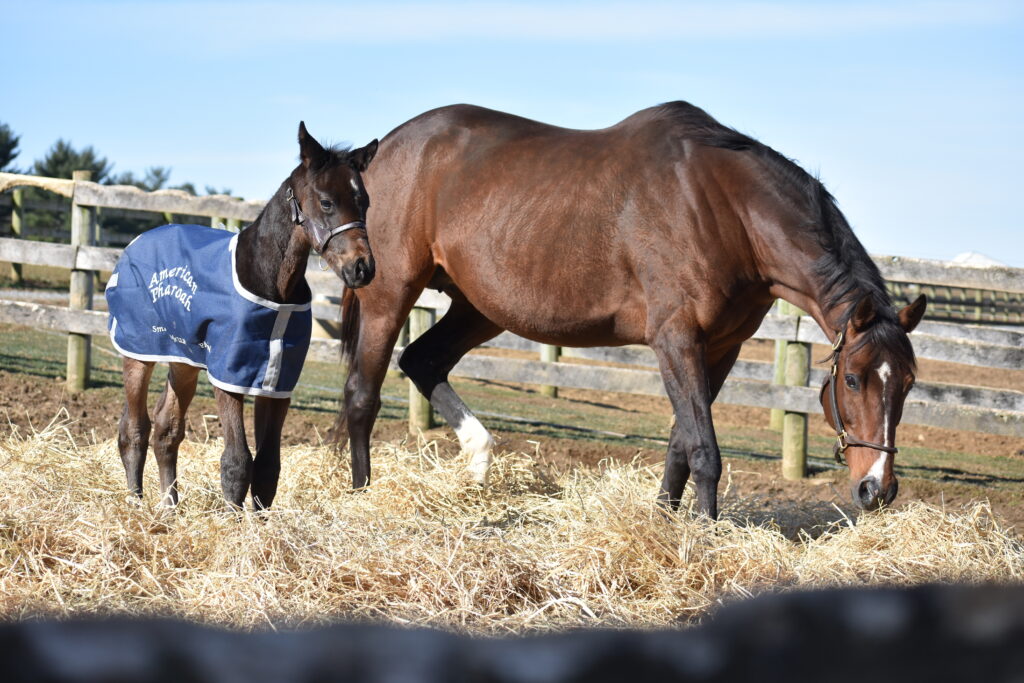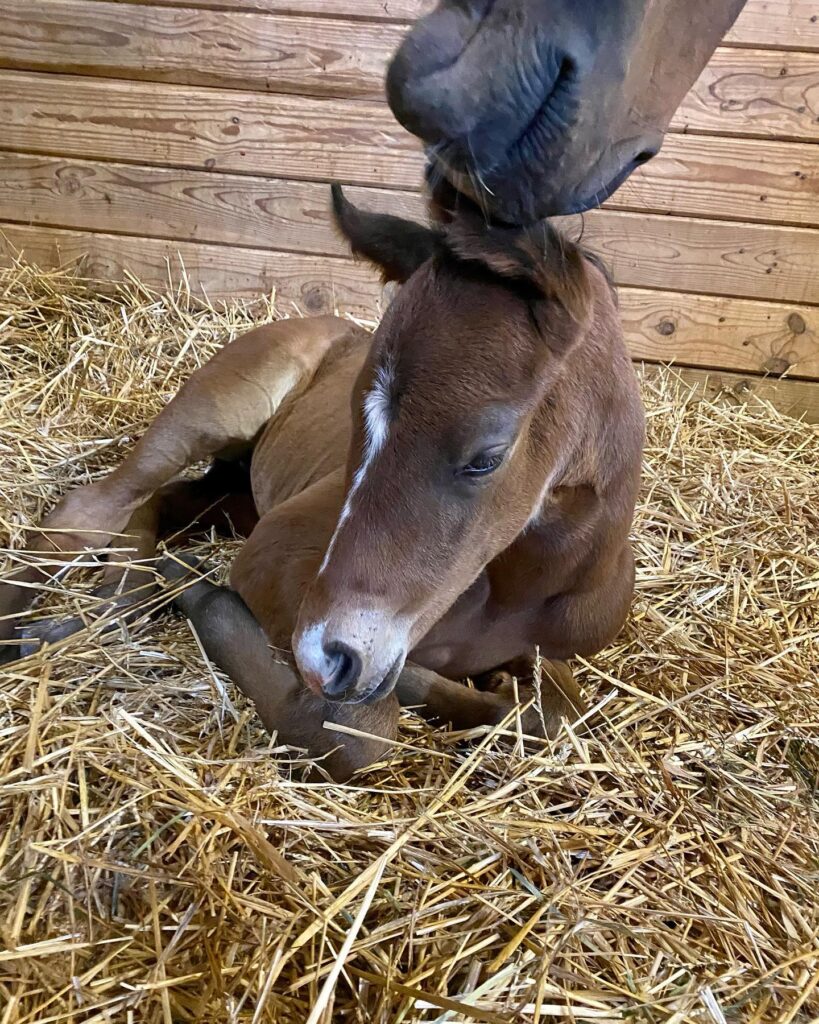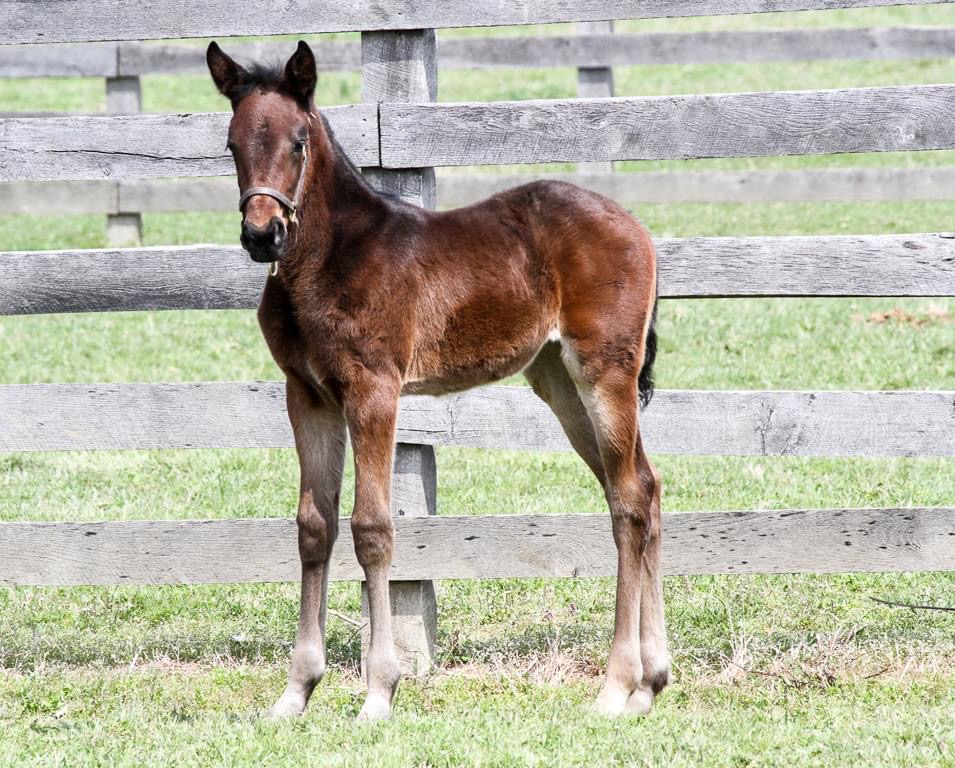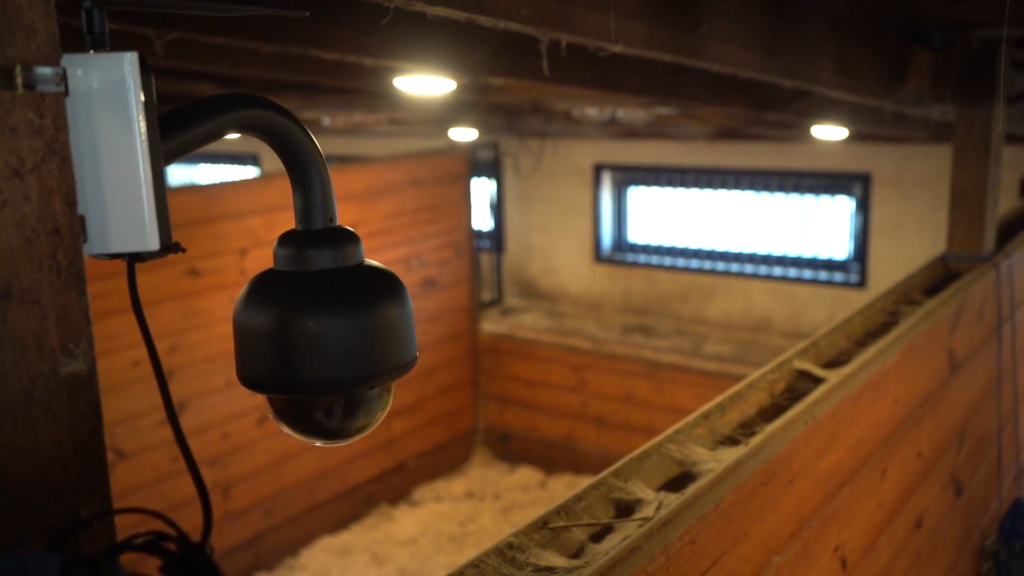Unlike us humans, horses generally don’t plan or make arrangements for pregnancies—their breeders have to do that for them. For racehorses, breeders have to weigh many factors, such as a mare’s age, health, and genetics, to decide when’s the right time to initiate a pregnancy.
A lot of thought and preparation goes into getting mares ready to develop and deliver a foal. From setting up a caring environment for gestation to looking after the mother’s health throughout the process, plenty of careful attention must be paid to expecting horses during their pregnancies.
As pregnancy season winds down and foaling season gears up to kick off with our upcoming annual Foal Cams stream, we wanted to share some insider information about horse breeding and foaling in Pennsylvania. In this guide, we’ll trot you through the process of breeding viable pairs, developing young foals, and delivering them into this world to become the next generation of racing legends.

Breeding: How Pairs Are Chosen
Generally, breeders have specific goals in mind for their upcoming group of foals. Whether they’re going to be showhorses, racehorses, or live a life of leisurely riding, horses are energetic animals that need to move to feel fulfilled.
Thus, owners must carefully select breeding pairs that give young foals the maximum chance of excelling in their future field of work. Oftentimes, breeders will turn to knowledgeable industry professionals to help them inform their selections, including: [1]
- Bloodstock agents – These equine consultants understand breeding pairs like the back of their hands and are called upon to make key recommendations about the viability of potential offspring.
- Geneticists – Geneticists understand genetic inheritability and can offer informed advice about the potential for disease and other characteristics that are passed on by breeding pairs.
- Artificial insemination technician – Artificial insemination technicians assist in the breeding process to make reproduction safe and effective for mares.
The Pregnancy Process: A Rough Timeline
Horses have longer, more varied gestation periods versus their human counterparts. Generally, they’ll last anywhere from 320 to 380 days (from 10 ½ months to just over a year) [2].
Similarly to humans, however, horses have several important milestones along their pregnancy path. Some key points during a mare’s gestation period include:
- Day 6 – Horse eggs are initially fertilized in their fallopian tubes. On the sixth day after conception, the fertilized egg will begin making its way down toward the uterus.
- Day 17 – In the time around day 17, the embryo should attach to the mare’s uterus. In the week or so preceding this period, it must touch every portion of the uterus to be recognized and implanted successfully.
- Day 16 to 30 – By this point, a qualified veterinarian should be able to detect the foal’s heartbeat and confirm the viability of the embryo.
Day 60 and onward – Between days 60 and 70 (or sometimes between days 110 and 140), breeders can have a veterinarian determine the sex of a foal.

When is a Foal’s Birthday?
No matter what date a foal is born on, they’re always given the symbolic birthdate of January 1st. That’s why breeders will generally try to time their births as early in the year as possible—if they have a whole extra year to develop versus their counterparts born in December, they’ll have a leg up on the competition when it comes to racing time.
Horses are almost always born at night. Animal scientists believe this is so mares can keep cool and give their foals time to rest before trying their first trots at morning light [2].
After Delivery: The First Moments of a Foal’s Life
Newborn horses are significantly larger than their infant human counterparts. When a baby foal is born, they’ll generally weigh around 100 pounds—or about 10% of their mother’s body weight [2]. A variety of factors will affect a foal’s exact weight, however, including:
- Their breed
- The size of the mare that birthed them
- Their mother’s age, with horses from seven to 11 years old producing the largest offspring.
- How many foals their mother has previously birthed, with more offspring leading to larger babies down the road
After a few hours of rest and adjustment, foals are able to walk, trot, and then eventually run alongside their mothers—all on their first day of life. They’ll suckle off mom’s milk for up to a month before shifting to solid food like their parents [3]. From there, they’ll slowly develop the skills they need to begin racing by (around) their second birthday.

See Foaling Live in Action with The Pennsylvania Horse Racing Association’s Foal Cams
If learning about the pregnancy process piques your curiosity, you may be interested to see the act of foaling live in action. If so, be sure to tune into the Pennsylvania Horse Racing Association’s (PHRA) Foal Cams this year.
The nearly year-long gestation period is coming to an end for Pennsylvania’s mares and the next generation of equine athletes are on their way. Tune in to get a sneak peek into the first few moments of these young, adorable foals’ lives and learn more about the science of equine breeding and pregnancy.
The PHRA is proud to support our dedicated, caring breeders as they carry on the legacy of horse racing in the Keystone State. We hope you’ll join us in giving their new foals a warm welcome as they enter the world. Be sure to follow us on Facebook and Instagram and keep checking our Foal Cams page for updates on when the cams will go live.

Sources:
[1] “Breeding.” Iowa State University. https://www.extension.iastate.edu/equine/breeding. Accessed December 19, 2023.
[2] “INTRODUCTION TO FOALING SEASON.” Pennsylvania Horse Racing Association. https://pennhorseracing.com/stories/introduction-to-foaling-season/. Accessed December 19, 2023.
[3] “Foaling Management and Care of the Nursing Foal.” Oklahoma State University. February, 2017. https://extension.okstate.edu/fact-sheets/foaling-management-and-care-of-the-nursing-foal.html. Accessed December 19, 2023.











